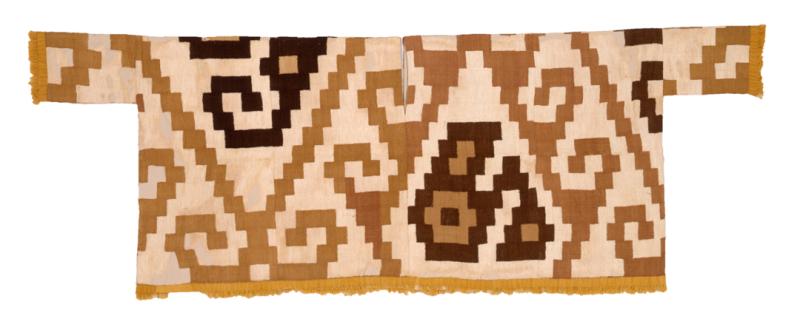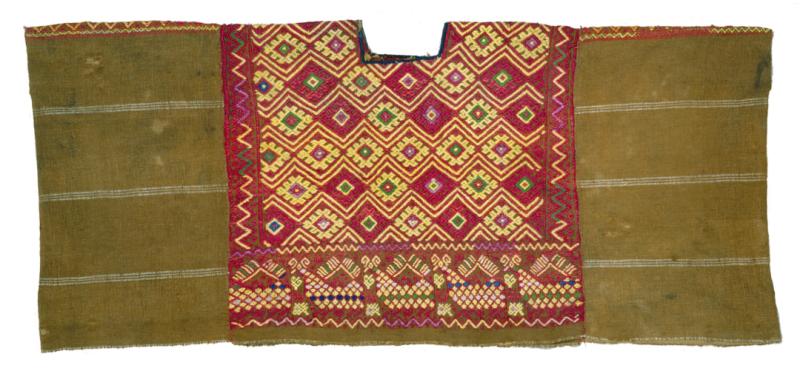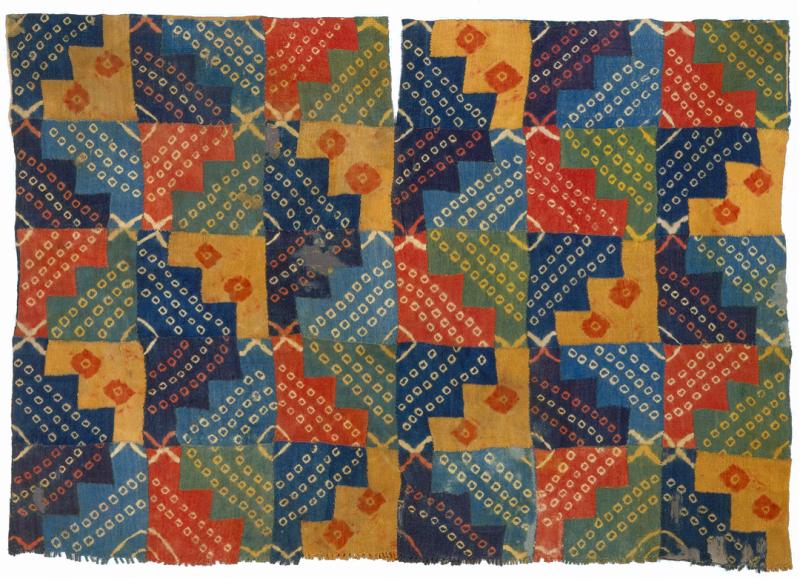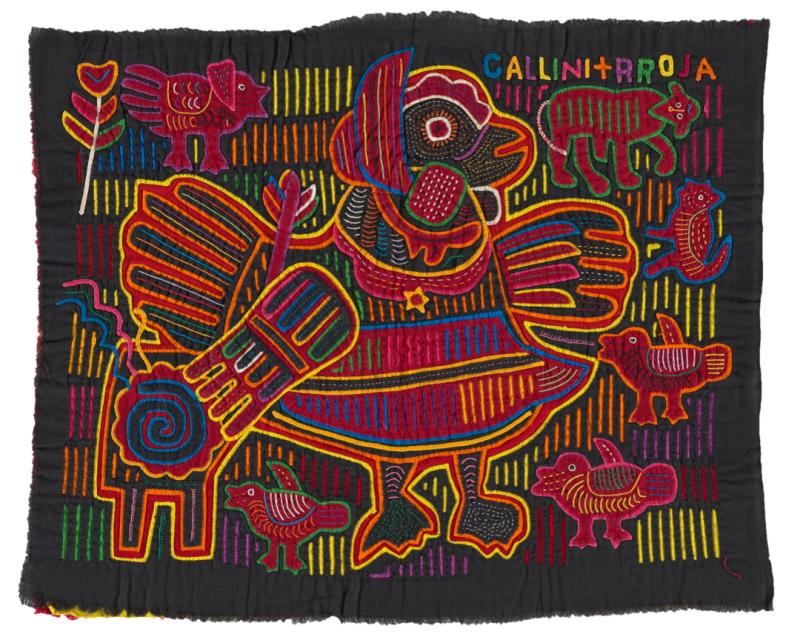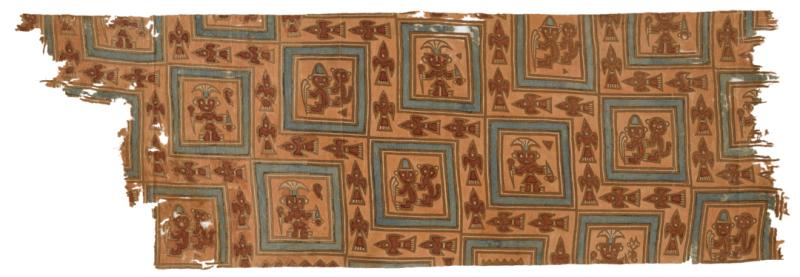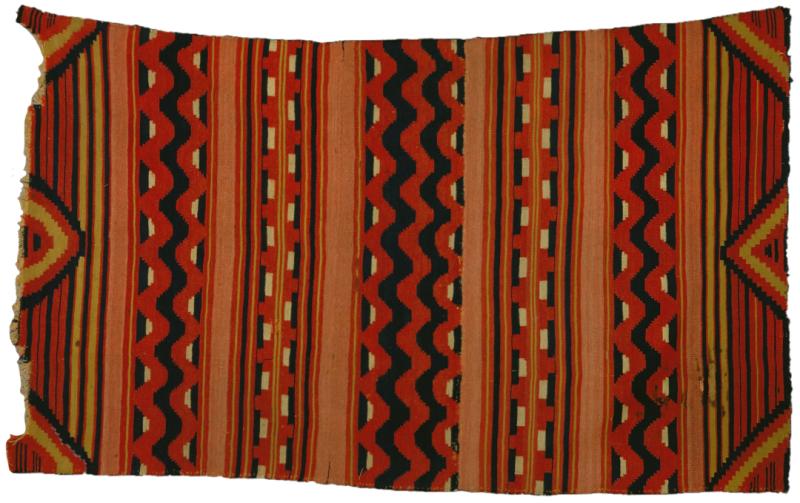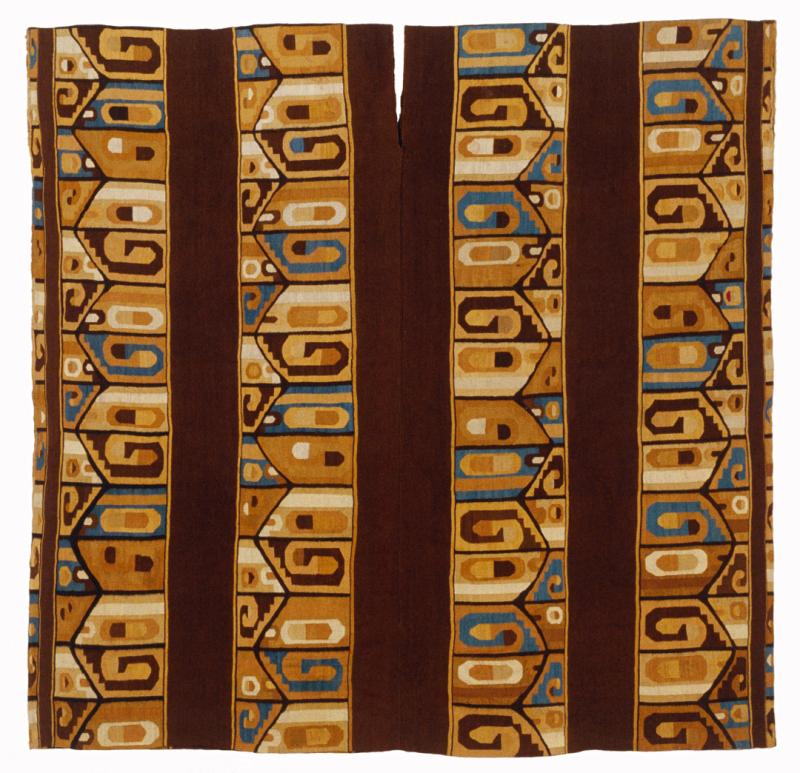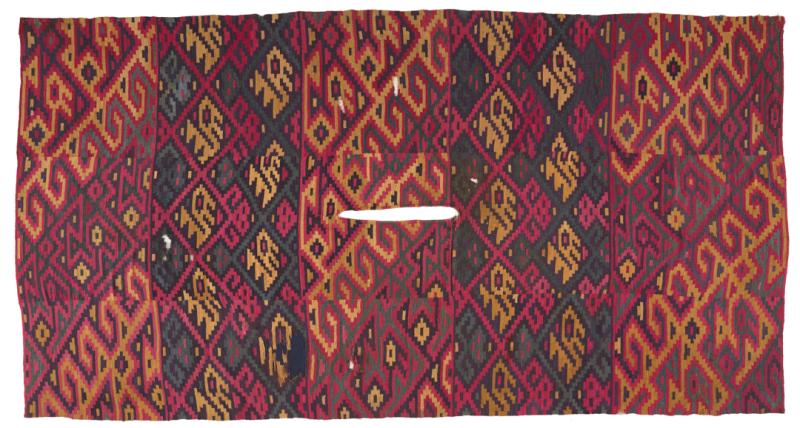Indigenous American Textiles
Textiles created by South, Central and North American Indigenous groups make up nearly half of The Textile Museum Collection. Among the most notable are eighth- and ninth-century Peruvian tunics and fragments from the Wari Empire, as well as late pre-Hispanic styles from Peru’s north (Chimu), central (Chancay) and south (Ica) coasts. Also represented are 20th-century weavings from Ecuador, Peru and Bolivia that continue pre-Hispanic traditions.
From Central America, we have textiles from over 50 villages in Guatemala, and a large collection of molas by the Kuna people of Panama.
Our small collection from North America includes sarapes, rebozos and village costumes from Mexico, as well as textiles representing Navajo, Pueblo and Tlingit traditions.
Man's tunic, Peru, Chimu style, c. 1300-1400, 91.849.
Woman's ceremonial overhuipil, Guatemala, Santa Apolonia, c. 1900, 1964.65.6.
Man's tunic, Peru, Wari style, c. 700-900, 91.341.
Woman's blouse panel (mola), Panama, San Blas Islands, Kuna people, 1960s, 1985.56.16.
Fragment from a woman's dress, Peru, Chancay style, c. 1400-1570, 91.428.
Child's mantle, southwestern United States, Navajo people, c. 1870, 86.6.
Man's tunic, Peru, Wari style, c. 750-900, 91.343.
Man's poncho, found in the Ica Valley, c. 1400-1570, 1969.43.1.
Keep Exploring
Learn more about the artworks featured on this page and other examples from our collections.



